Published by Jeremy. Last Updated on July 21, 2022.
Disclaimers: Our site uses demographic data, email opt-ins, display advertising, and affiliate links. Please check out our Terms and Conditions for more information. Listed prices and attraction details may have changed since our visit and initial publication.
There is a lot of confusion on the performance difference between lenses if used on a specific camera body, especially with regards to using full frame lenses on crop sensor cameras (like the Sony a6000, my camera, which uses a “crop” APS-C sensor).
Cameras like mine take lenses designed for crop sensors (naturally), but also take lenses that are rated for full frame cameras (like the Sony a7iii).
The confusion comes in to play in what kind of image these two lenses will produce at comparable focal lengths, as the discussion of camera “crop factors” is often used interchangebly with lenses as much as they are for sensors. Even I have to admit being messed up on it for quite some time (hence this post).
If comparing a full frame rated lens with a crop sensor lens on the same crop sensor camera body, the main difference is this: nothing.
✈️ Book Your Next Trip
- • Planning a trip? Find a flight deal.
- • In need of a room? Check out hotel and apartment prices.
- • Taking a cruise? Find a cruise itinerary for your journey.
- • Don't overlook picking up a rental car or day tours as well!
Focal Length is Focal Length
To put it bluntly- if you are looking to buy a full frame rated lens to use on your crop sensor camera, as long as it is compatible for your brand and mount, the full frame lens will take the exact same photo as a crop sensor lens insofar as the focal length, aperture, lighting, etc. are all the same.
To translate, a photo taken on a crop sensor Sony a6000 at 24mm f/4.0 1/200 sec with a full frame designed lens will produce more-or-less exactly the same photo as a photo at 24mm f/4.0 1/200 sec on a lens designed for the crop sensor.
The crop factor means nothing if you’re only looking at using a full frame rated lens on a crop body.
I tested this out, and the results are below for my 18-135mm f/3.5 lens designed for a crop sensor camera and my 24-240mm f/3.5 lens designed for a full frame camera- both used on the Sony a6000 with the APS-C crop sensor at 24mm:
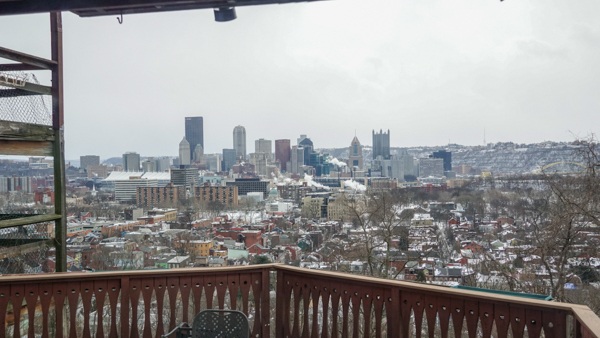

Can you tell the difference? No, you can’t.
This is because a shot at 24mm on a full frame lens and a shot at 24mm on a crop sensor lens will produce exactly the same image if used on the same camera body (my Sony a6000).
You simply don’t get a crop when using full frame lenses on a crop sensor body. The focal length of any lens will produce the same image on your crop sensor camera regardless of if the lens is designed for a full frame camera or a crop sensor camera.
When the crop factor does come in to play is with regards to the sensor, and it should only be used when comparing camera bodies in addition to the lenses.
The Image Produced Varies By Camera Body
The crop factor concept comes in to play when comparing lenses on specific camera bodies. The reason for this is that full frame sensors are physically larger.
This means they often have more pixels, but it also means that they inherently produce a larger/wider image due to the increased area.
If you take a photo at 24mm in focal length on a full frame camera, you’re going to get a wider image than a 24mm image on a crop sensor camera. This has nothing to do with the lens (24mm is 24mm), but is all about the size of the image captured on the sensor.
This is where crop factors come in to play.
My Sony a6000 has an APS-C sensor with a crop factor of 1.5. A 24mm rated photo on my camera captures a scene proportional to what the camera’s sensor allows. Full frame cameras, on the other hand, can capture a larger scene due to the larger sensor size. What they capture at 24mm is actually a lot more of the scene (or, if keeping it in camera vernacular, ‘wider’).
How do we calculate the difference? With crop factors. The 1.5 crop factor rating is how we convert.
So let’s say you take an image on my Sony a6000 at 24mm. To recreate that exact same photo on a full frame camera (framed at the exact scale), you’ll need to take a photo at 36mm. The reason being that the larger sensor collects more of a scene than on a crop sensor, so you’ll need to shoot at a larger focal length to fill in the same area.
But why the confusion? I feel like a lot of people think that the rating on the lens means the crop factor is applied when using full frame lenses on a crop body. It doesn’t.
The factor only comes in to play when you want to make an apples-to-apples comparison on cameras in terms of the images actually shot.
Say I want to upgrade my camera in the future from a crop sensor to a full frame sensor, and I like what the viewing area is at 20mm for my shooting style (wide vistas).
Using a 20mm lens on a full frame camera will actually produce a much wider image (by a factor of 1.5), so instead I should look at a lens with 30mm instead to get the same exact result in the frame. (Or in reverse, if a lens review shows a picture from a full frame body at 30 mm, and I wanted to recreate it at the exact same spot with my crop sensor, I’d shoot at 20mm).
That is all! The lens sees what the lens sees, and it is the sensor that records the image.
You May Not Be Able to Use Crop Lenses on Full Frame Cameras
There is one caveat to all of this I feel compelled to mention, and that is in regards to usability.
In the above discussion, I mentioned the physical size of the sensors and how that relates to the crop factor in a body-to-body discussion.
I mentioned that you can use full frame-rated lenses on crop sensor bodies (if compatible for brand and mount, of course), but I did not really explain why that is (and why the reverse is not inherently true).
Full frame rated lenses are often much larger than those designed for crop cameras as they have to let in more light (by cross-sectional area) to produce images on the larger sensor. These can be used on crop sensor cameras because the lens is larger than what the crop sensor needs.
The only negative is the lens is likely going to be bulkier, heavier, and likely more expensive than those designed purely for crop cameras (but sometimes you take what you can get if its the best fit for you).
On the flip side, however, you often cannot use a crop sensor lens on a full frame camera for the very same reason. These lenses are designed to be smaller to let in just enough light to cover a crop sensor and produce an image.
When put on a bigger camera the light will not reach the edges of the full frame sensor and produce some distortions on the image.
Some full frame cameras are now able to adjust for this via internal processing, but they often simply crop the image to reduce the resolution of the photo to fit the exposed parts of the sensor (per the image above). But this is not necessarily the case with all cameras, so its best to avoid the issue altogether and only buy properly rated lenses (when in doubt, reviews on Amazon provide really good insight).
This is why you can use full frame rated lenses on crop cameras, but can’t in reverse. And hopefully with the above explanation, you now understand the difference into how images will look when using the two kinds of lenses on your crop sensor body itself.
Just remember:
- Focal length is focal length. A 24mm shot will always look the same regardless of the lens type if used on the same body.
- Where the image will look different is comparing a photo shot at 24mm on a crop sensor camera vs at 24 mm on a full frame camera, and this is due to the sensor size- not the lens.
- You can use both kinds of lenses on your crop sensor camera, but you may not be able to use a lens rated for a crop sensor on a full frame camera unless the camera can internally compensate for this. Newer full-frame cameras can digitally crop images to compensate via internal settings, but you’ll be taking photos at lower MP ratings.
- Camera manufacturer (Sony) and mounting type (E-Mount, A-Mount) considerations still apply. Nikon lenses won’t work on Sony and A-Mount lenses wont work on E-Mount cameras without adapters (that often slow performance).
Ready? Pick up your new camera lens and go shoot!
For frequently asked questions regarding camera sensors, check out the following.
What is the difference between full frame and APS-C sensors?
The difference between full frame and APS-C sensors is their size. The measurement between any two sensors is known as the crop factor. Full frame to APS-C is generally 1.5x (i.e., the full frame sensor is 1.5x larger).
How does the sensor relate to the camera lens?
For any given sensor, a proportional lens area is required to capture a scene. For larger sensors, more glass is needed to let light in to cover the sensor.
Can APS-C rated lenses be used on full frame cameras?
Generally speaking, no. The glass in most APS-C rated lenses is not large enough to let enough light in to cover the entire sensor on a full frame camera. Some high-end full frame cameras have an internal crop mode, but this is simply a reduction of usable sensor space (MP).
Can full frame lenses be used on APS-C sensors?
Generally speaking, yes- insofar as the mount is compatible. The glass in most full frame lenses is oversized compared to what is necessary for APS-C sensors, so as long as they are compatible with model and mount style it should work. But it should be noted that full frame lenses are often much more expensive due to this extra glass.
How does image quality compare between the sensors?
Full frame sensors are larger than APS-C sensors, so for an equivalent focal length, the image will appear much larger (wider) than its APS-C counterparts. A 35mm focal point on a full frame sensor will appear 1.5x larger than a 35mm focal point on an APS-C sensor- this is the crop factor.
Does image size change using a full frame lens on an APS-C body?
The respective image “size” is always tied to the sensor. If you are comparing two lenses on an APS-C body, the focal length will always capture the same sized image. If you are comparing one lens used on a full frame sensor and an APS-C sensor, the crop factor tells how much the apparent image size will change. The sensor should always be the reference point.
Have an existing blog that is in need of an upgrade? Check out the following services we personally use!
- BigScoots - Premium managed hosting with plans as low as $35/month.
- GeneratePress - A customizable theme designed for site speed.
- AdInserter Pro - A widget logic plugin that is quite powerful.
- WP Rocket - An image and caching optimization plug-in.
- Mailerlite - Cost effective newsletter service.
- Keysearch - Keyword research tool for SEO.
- Pretty Links Pro - A great link cloaking tool to clean up affiliate links.
About Jeremy

About the Author: Jeremy is a full-time travel writer based in Pittsburgh and primary author of this site. He has been to 70+ countries on five continents and seeks out new food, adventure activities, and off-the-beaten-path experiences wherever he travels.
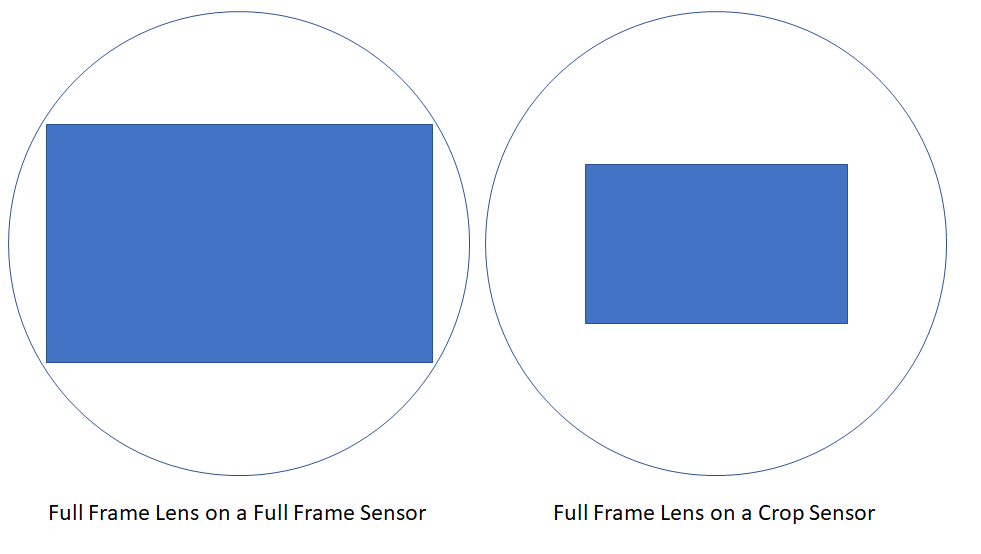
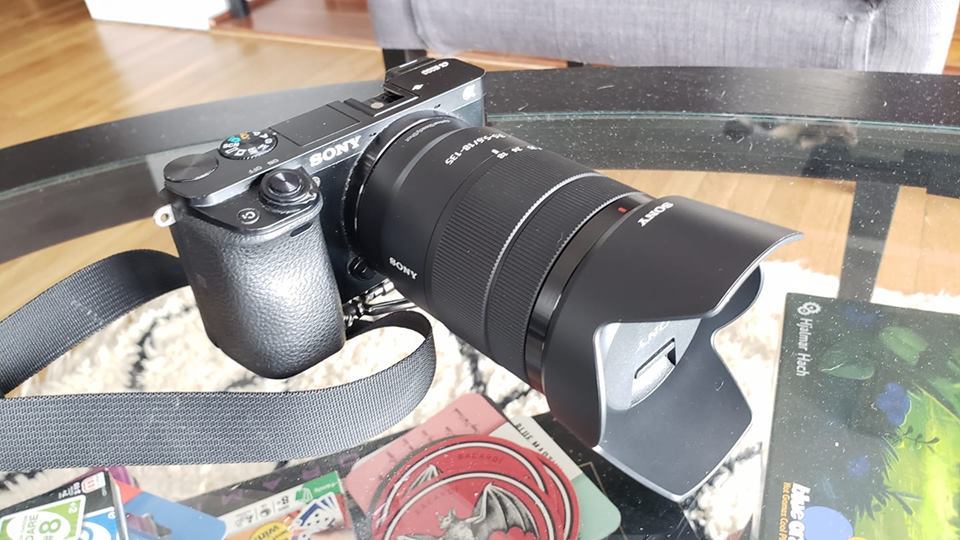
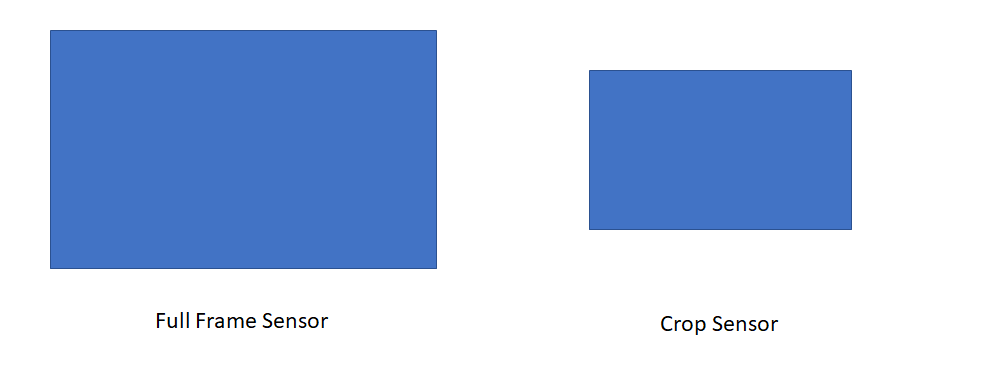
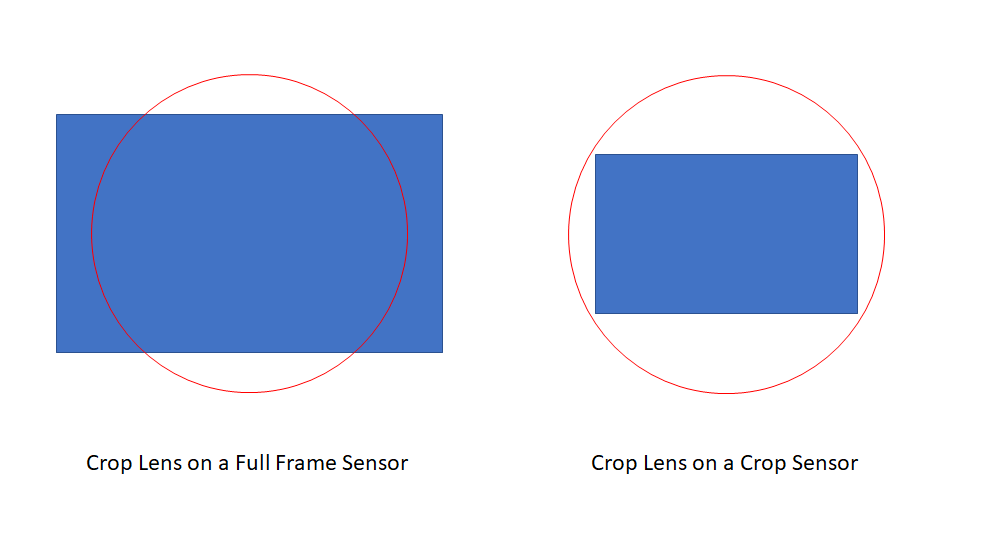
my biggest takeaway is that most lenses are better optically at the center, the bit where crop sensors are. So Fulls are heavier, bulkier but sometimes have a higher optical proficiency.
Some, more technically comment persons argue that your paying for a thing your camera can’t use…so your wasting potential and cash!
If that’s the only real, valid issue… I’ll do as I choose thanks.
however bulk gets on my nerves.😉
I suppose that is all technically true, but mostly the intent of this was to show the difference between going between the two sensor sizes and the reverse compatibility issues. But you’re right, full frame lenses are bigger and may be slightly better. But if you ultimately upgrade from a crop camera to a full frame, you will have to either use crop mode (if your camera has one) or buy new lenses. So that’s worth keeping in mind.
Hey Jeremy, I really hope you can help me here.
The Sony FX30 just came out which is an APS-C sensor. Sony FX3 is full-frame.
If I shoot a person from the same spot, using a Sony 23mm crop lens on the FX30 vs a Sony 35mm full-frame lens on the FX3, they should match closely in their FOV/appearance right?
So, to account for bokeh, I could use a faster lens on the FX30 crop sensor to get the DOF close as well right? I.e. Sony 23mm f/1.8 for FX30 → to match a Sony 35mm f/2.8 on the FX3?
Assuming that’s all true and the lens quality are as equal as they can be (brand, age, etc.)…
…is there any reason use full-frame aside from improved low light performance with these adjustments in mind?
Cheers!
I can’t say for certain that you’d have to account for lens speed (f/1.8 vs f/2.8) in this scenario. I’ll be honest in that I have not tested this. In a quick review of comparison articles on that topic, it seems like this difference will be more and more present at longer focal lengths (i.e. 80mm, 100mm, etc.) over shorter ones. In theory, yes, there will of course be differences. But in practice, at the examples you used specifically, I would be very surprised if they were noticeable enough for most photographers to care. Whether you fall within the range of most photographers is something I can’t comment on (for me, I wouldn’t worry too much).
But with regards to your second question, there really is no reason to use a full-frame camera outright unless you want some of the benefits that the (often premium) body provides. Higher resolution, better ISO range, lower light sensitivity, etc. Lots of manufacturers tend to have more lens options for full frame cameras over crop, although new full frame cameras often let you engage in a crop mode to use APS-C lenses. I upgraded to a full frame camera last year and think its overall performance is simply better than my old APS-C all around. But whether that is simply because it is a new model camera outright or because of being full frame is something that could be debated.
Pure genius ( if you are correct and I’m guessing you are. Save me some of that corn) thanks
Ben McCully
For this one I do admit that I have not tested the aperture differences personally. But from what I have read the logic makes sense.
Good evening,
If I were to use a full frame lens on a crop sensor camera, would there be any difference in sharpness / quality of the image as apposed to using a lens built to use on a crop sensor only (regardless of the optical focal length)?
Do full frame lenses have better quality glass, i.e. Canon L lenses compared to the equivalent in a Canon lens manufactured for a cropped sensor Camera?
I am not sure I am qualified to answer that one based on my experience. I think that most companies have better full frame lens options in general if only because crop cameras are relatively new by comparison- so their high-end lens inventory for crop cameras is smaller. But if you had two model lenses to the exact same specs, one for full frame and one for crop cameras (I am not sure if this exists, but let’s go theoretically here), I suspect you wouldn’t see much difference using either on a crop body. The only thing I can think of is that sometimes lenses can produce more distortion around the edges, so you may see *possible* improvement using a full frame lens on a crop body if only because you’re working closer to the center of the lens overall as shown on some of the images in this article- so perhaps look into distortion commentary in reviews in particular.
In reality you’re probably just going to find better quality options available for full frame cameras whereas a crop equivalent may not exist at all. But if you find a solid crop sensor lens that meets the specs you want, I wouldn’t be against buying it over a full frame option since it will likely be cheaper (unless you ever think you’ll want to upgrade to a full frame camera later, at which case then buying a full frame lens may be reasonable).
I want to buy a Sony 70mm to 300mm full frame lens to use on an APS-C camera a6400. It says the 35mm equivalent focal length on an APS-C camera is 105mm to 450mm. Does this mean that the image will be closer or larger by using a full frame lens on the APS-C camera? Would like to get a closer shot of wildlife and thought this might be the easiest way to facilitate that. Please let me know your thoughts. Thanks!
If your reference point is only having an APS-C camera body (i.e. you’ve never used a full-frame camera), then the answer is straightforward. It is no. Images on a 70mm-300mm FF lens and a 70mm-300mm Crop Sensor lens will look 100% identical on the same APS-C body. There is no inherent extra zoom you get with a different lens if you are comparing it to the APS-C body/sensor alone.
The equivalent focal lengths you mentioned are used to compare the sensors on the two different camera bodies. APS-C sensors are 1.5x smaller than Full Frame, and thus produce images that appear 1.5x cropped at equivalent focal lengths.
So, say you had an APS-C camera and you liked shooting at 70mm for your desired scene, but then you moved to a Full Frame camera, you’d want to shoot at 105mm to reproduce the same scene on the frame. Or, in reverse, if you like to shoot at 105mm on a Full Frame and want to recreate that exact image on an APS-C camera, you need to shoot at 70mm. These could influence your lens purchases accordingly when switching bodies- and only when switching bodies.
As such, always think of the equivalent focal lengths when comparing images produced on two different sensors. A 70mm lens on an APS-C will produce the same image whether than lens is cropped or Full Frame. If you are 100% thinking in terms of APS-C only, it doesn’t matter. The only difference is that the glass in the full frame lens will be much bigger (necessary to cover the larger sensor on full frame cameras) and will likely be more expensive. It, unfortunately, is not going to help get you more effective zoom though.
I do not agree. You will get a closer shot with your full-frame lens on your APSC camera, of course you will. The only that won’t change is your perspective. When you use a 70 mm full frame lens on your APSC camera, you wil get closer to the subject as you would have an 105mm full frame, however, you won’t have the same look of an 105mm full frame lens on a full frame camera. But anyway, once you surpass 200mm in full frame, this doesn’t matter at all: the compression of your image is more than enough. So yes: using a 70-200mm full frame lens on an APSC camera gives you the equivalent of a 105-300mm.
You 100% will not get a closer shot with a full-frame lens on an APS-C camera if your only reference point is the APS-C camera alone. The only time this matters is if you are comparing a full-frame body with an APS-C body. The sensor is the only thing that contributes to the crop factor- not the lens (APS-C sensors are 1.5x smaller than full-frame sensors and therefore produced “cropped” images at equivalent focal lengths).
Your starting point for the conversation matters significantly here. If you only ever had an APS-C body, the conversation doesn’t matter at all- both lenses will produce identical shots. It only matters if you’re comparing camera bodies with two different sensors.
This article contains two photos taken on a crop lens and a full-frame lens on the same APS-C body at the same exact focal lengths and they look 100% identical. The crop factor only comes into play between two sensors.
Hi, thanks for the explanation. I didnt saw it in the comments neither explained in your article if im not mistaken. Another way to take the same photo isn’t just stepping back? I mean for example if you were to take a shot of a 50mm on a full frame and you stand at 10 feet from the person you are going to take the photo from, wouldn’t be the same for an aps c sensor camera to stand at 16 feet from the person to create the same shot? I wonder 🤔
Yes, theoretically many problems can be solved simply by moving. We do this a lot with our prime lenses to compensate for not having a zoom. But there are other factors at play that may make physically moving not the best (distortion from lenses, larger telephoto ranges requiring bigger distances that may be impractical, etc.) so I wouldn’t bank on that being a cureall.
Hi,
So if I was wanting to use a Laowa Probe 24mm Lens on a Canon C300 (S35mm Sensor), will the lens still “appear” as a 24mm? Or will it apply the 1.6x crop I was thinking it might?
Thanks
It depends on your reference point. If thinking based on the sensor, an image taken at 24 mm will look the same independent of the lens. 24 mm on a full frame rated lens and 24 mm on a crop rated lens will take the same exact picture- its all relative to the sensor size. If you are comparing images taken with a 24 mm lens on two different sensors, then the final image may be different because of the crop factor. But this is due to the difference in size of the sensor itself and not the lens.
HI! thank you for the post. So if I understand correctly, full frame Sony 16-35mm f/2.8 GM lens will work in the same zoom range for a crop sensor a6000 i.e. 16-35mm f/2.8. Is this correct?
Functionally, yes. A full-frame lens (Sony 16-35 f/2.8) should work just fine on an a6000 crop body as long as the mount is the same (or you have an adapter). It will just be bigger and bulkier than the equivalents made for the crop cameras as those lenses are physically smaller. If you had a crop equivalent 16-35mm, they’ll produce the same photos on the same a6000 body.
As mentioned in the post, the big difference would be if you are comparing the images produced on a 16-35mm on a full frame camera vs a crop camera as the sensor area comes in to play then. But if you’re only thinking of lenses on the crop body itself, they will work just the same.
I have a Sony A6500 crop sensor camera. I also have a Sony A7iii full frame camera. I have the full frame Sony 70-300 lens which is large and heavy. I also have the crop sensor Sony 18-135 lens. I will be doing a weekend workshop which involves shooting all day Saturday. I’ve pretty much decided to take the 18-135 lens instead of the 70-300 because the other is soooooo much lighter. So, I think that’s a pretty valid reason for using a crop sensor lens on a full-frame camera. I don’t think I will be losing image quality by doing this. What do you think?
In most cases, you cannot use crop sensor lenses on full-frame camera bodies as the glass is not big enough to cover the sensor. This is illustrated in one of the graphics in this article. I believe the A7iii has a feature where you can put it into APS-C mode to accommodate these lenses, but that reduces the utilized sensor size accordingly. You wont get the full 24.2 MP. So your images would be lower resolution at a minimum. If you do not enable that setting on the camera you’ll likely see some distortion along the edges (although I do not have firsthand experience with that).
I’ve been researching this because I own the A6000 and want a lens for boudoir shots. If I blindly went out and bought a 50mm or 85mm I may have to stand in the hall to get the subject ????
Thanks for this great article. My question is this: I have a Sony a6500 and a few manual FF Canon lenses with an adapter. In the settings, I need to input the focal length – do input the actual focal length of the lens (say 50mm) or do I need to input the focal length x the crop factor? Thanks!
The focal length is the focal length. I would put the 50mm in. Your crop sensor camera will see the same thing at 50mm on a FF lens and at 50mm on a crop sensor designed lens. The crop factor should only matter when you’re trying to replicate a shot between one sensor and the other. (E.g. You like what a 50mm scene looks like on your FF camera, so you need to shoot at 33mm on your crop sensor. The sensor is smaller, so you need a wider focal length to fill the same area of a picture. The lens doesn’t matter insofar as it is compatible with the camera.)
Thank you!!!
I have been trying to find an answer to this for 2 years. It really bugged me after I upgraded from a Canon 70D crop sensor to a Canon EOSR.
I live in Pittsburgh also. It would be great to have a beer with you sometime.
I, too, have traveled around the world, but most of it was with film SLR’s.
It’s like is a glass half empty or half full claiming the sensor is cropped rather than we are cropping into the lens, its merely subjective to perspective,
I don’t think that is a good way to look at it at all. On this topic I think it is always better to look at things based on your sensor first, lens second.
Hey there! Don’t forget about APS-C or Super 35mm mode in new A7III cameras that means you can actually use APS-C designed lenses on FF body.
While it appears that is true, that mode also only uses about half the available sensor area to take photos. Not sure it is worth it to spend nearly $2,000 on a camera and then only take 10MP images.
Yes, that is true.
I put on Canon EFS lenses on EosR5 with the adapter, (Apsc lense into FF body) and the camera automatically work very well, and the image is supwrb too.
Thanks for the post. I have an a6000 and want to upgrade lenses, but I also know that in the near-sh future I’m probably upgrading to a full frame camera as well. I don’t love the idea of dropping a bunch of money on ASP-c lenses and then having to do the same on a full frame if there is a way to buy lenses that will work on both.
I thought the same. It stinks that lenses built for crop sensor cameras can’t work on full frame lenses (like they can in reverse), but it does help keep the cost down. A full frame lens will work just fine on your crop as long as its the same mount, but keep in mind everything mentioned about the focal length “effectively” being different from what you’re used to when you ultimately get the new body. Likewise, all full frame lenses will be significantly more expensive (and much larger) since its way more glass.
There is a difference in the 2 photos provided for comparison perhaps the camera was not located the same location? objects near the edge ie deck railing are not the same.
I have a question I am looking at a used full frame lens for my crop sensor. you say they let more light in- does this mean it will be a faster lens on the crop frame, work better in low light then the same crop frame lens?
I didn’t take the shots on a tripod, so the minor variations are purely from me holding the camera in a similar spot. If there was a big difference between lenses it would be more noticeable. But in terms of your question, I don’t think they would work better in low light on a crop camera. The same amount of light will be hitting your sensor regardless of lens choice. It is just that on full frame cameras the sensor requires more light and therefore needs a bigger lens. I do think that full frame sensors are typically better in low light in general, but that would be the only difference- not the lens.
Nice. It will really help the newbies like me who loves photography.
So at the risk of sounding dense I’m going to ask this anyways so that i dont buy something at regret it later. I like the 20mm look on my sony a6000. If i buy a FF lens and want the same look I need to buy a 20mm lens correct?
It all depends on what you are comparing. If you like the look of a 20mm lens on your Sony a6000, then a crop lens or a FF lens will both look the same at 20mm. The difference comes in to play if you like the look of 20mm on a full frame camera (like the a7iii) and want to replicate it on the crop camera (a6000). My 20mm prime (crop) and 20mm on my FF lens look identical on my a6000 body.